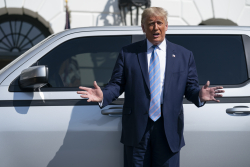Donald Trump’s presidency marked a significant period in American history, drawing attention and sparking conversations across the globe. In this article, we will explore the multifaceted impact of Trump through a deep dive into his key policies, their economic implications, and the social and political ramifications of his leadership. By understanding these elements, we can better assess the long-term effects that Trump’s presidency has had and will continue to have on the United States and beyond.
Key Takeaways
- Trump’s presidency was marked by significant shifts in both domestic and foreign policies.
- Key policies such as tax reform and immigration restrictions had profound effects on the American landscape.
- The economic impact of Trump’s administration included both job growth and increased national debt.
- Trump’s legacy provoked deep social and political divisions within the United States.
- Understanding the long-term effects of Trump’s leadership is crucial for future governance and political discourse.
Introduction to Trump’s Presidency
Donald Trump’s presidency, which spanned from January 2017 to January 2021, marked a significant period in American political history. As the 45th President of the United States, Trump brought a unique approach to governance that challenged traditional political norms. His administration focused on numerous key issues, including tax reform, economic growth, and deregulation, which many supporters argue revitalized the American economy prior to the pandemic. Trump’s emphasis on an ‘America First’ policy reshaped international trade agreements and foreign relations, aiming to protect American jobs and industries. Additionally, his presidency was characterized by contentious debates on immigration and national security, as well as efforts to appoint conservative judges to the federal judiciary. Throughout his tenure, Trump maintained a highly engaged base of supporters who appreciated his direct communication style and outsider status.
Key Policies Implemented by Trump
Former President Donald Trump implemented a series of notable policies during his administration that have significantly impacted various sectors within the United States. His tax reform, known as the Tax Cuts and Jobs Act of 2017, reduced the corporate tax rate, aiming to stimulate economic growth and job creation. Trump also focused on deregulation, rolling back numerous regulations across multiple industries to promote business development and encourage investment. Furthermore, Trump prioritized energy independence, paving the way for increased domestic oil and gas production, which contributed to lower energy prices. In terms of foreign policy, Trump adopted a more nationalist approach, re-negotiating trade agreements to favor American workers and withdrawing from multinational deals like the Trans-Pacific Partnership. Additionally, his administration emphasized law and order, implementing policies aimed at reducing crime and supporting law enforcement agencies. Overall, these key policies reflect Trump’s vision of revitalizing the American economy and securing national interests.
‘The mark of a great leader is not how many followers you have, but how many leaders you create.’ – Donald Trump
Economic Impact of Trump’s Administration
The economic impact of Trump’s administration has been a topic of considerable analysis and discussion since he took office in January
2017. During his tenure, President Trump focused on policies that aimed to stimulate economic growth, such as tax cuts and deregulation, which many argue contributed to a significant increase in the stock market and a reduction in unemployment rates prior to the pandemic. The Tax Cuts and Jobs Act of 2017, one of the hallmark achievements of his administration, lowered corporate tax rates, which incentivized businesses to invest in infrastructure and expand their operations. Furthermore, Trump’s emphasis on renegotiating trade agreements aimed to bolster American industry, which garnered positive reactions from various sectors. The economy experienced robust GDP growth rates in several quarters, showcasing a resurgence in consumer confidence and business investment. Overall, many supporters of Trump point to these economic measures as beneficial for American workers and businesses alike, fostering an environment of opportunity and growth.
Social and Political Ramifications of Trump’s Legacy
The social and political ramifications of Trump’s legacy have significantly shaped the current landscape of American society and governance. His presidency, which spanned from 2017 to 2021, was marked by a polarizing yet transformative approach to leadership that continues to influence political discourse today. One of the most noteworthy impacts has been the increased political engagement among American citizens. In the wake of Trump’s term, there has been a significant rise in participation rates in local and national elections, with grassroots movements gaining momentum across the country. Additionally, Trump’s policies and rhetoric have encouraged a generation of new leaders who are keen to address issues such as economic inequality and climate change, leading to a more vibrant and inclusive political dialogue. Furthermore, Trump’s unique relationship with social media has reshaped communication dynamics, empowering individuals and communities to voice their opinions and mobilize for various causes. Thus, the social and political ramifications of Trump’s legacy are far-reaching, fostering a more active and engaged populace while continuously redefining the American political landscape.
Conclusion: Assessing the Long-term Effects of Trump’s Leadership
In assessing the long-term effects of Trump’s leadership, it’s essential to acknowledge the multifaceted impact he has had on American politics, economy, and society. Trump’s policies have undeniably shifted the political landscape, fostering a culture of engagement among diverse voter bases who previously felt disenfranchised. His administration’s focus on deregulation has spurred economic growth in various sectors, promoting job creation and innovation. Moreover, Trump’s approach to international relations has invigorated discussions around nationalism and trade, leading to renegotiated agreements that prioritize American interests. The development of a robust foreign policy has also enhanced national security, while the ongoing conversation about immigration reform has opened avenues for essential dialogues on human rights and border policy. As we look towards the future, the influence of Trump’s leadership continues to shape the Republican Party’s direction, encouraging a reevaluation of core values and principles that resonate with a significant portion of the electorate. Overall, the enduring effects of Trump’s presidency highlight a pivotal moment in U.S. history, fostering engagement and debate that could redefine political norms for years to come.



















Leave a Reply